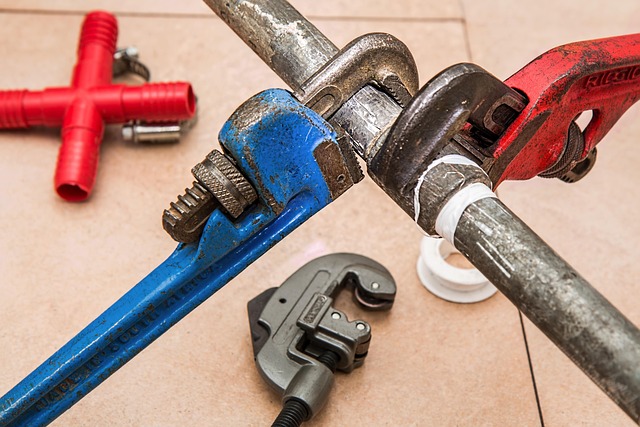Residential foundation repair is essential for maintaining home safety and stability. Soil movement and weather can weaken foundations over time, leading to cracks, uneven floors, and structural damage. Professionals use advanced tools like GPR and thermal imaging for accurate assessments, identifying issues like wall cracks, settlement, and moisture intrusion. Regular inspections, proactive maintenance (e.g., gutter cleaning, crack sealing), and timely professional intervention are key to preventing costly repairs, ensuring structural integrity, and preserving home value.
A home’s structural foundation is its backbone, and ensuring its integrity is crucial. Regular Structural Foundation Inspection is an essential practice to catch potential issues early, preventing costly residential foundation repair. This comprehensive guide explores various aspects of foundation health, from understanding basic repairs to advanced inspection technologies. Learn about common problems, non-invasive assessment methods, and when to seek professional help for optimal safety and quality in residential foundation care.
Understanding Residential Foundation Repair: The Basics

Residential foundation repair is a crucial aspect of maintaining a safe and stable home. The foundation, often considered the backbone of a structure, supports the entire weight of the building. Over time, various factors like soil movement, extreme weather events, or structural issues can compromise its integrity. This is where professional intervention comes into play, offering solutions to mend and reinforce the foundation for long-term stability.
The basics involve assessing the type and extent of damage, which could range from cracks in the walls to uneven floors. Technicians use advanced tools and techniques to pinpoint weak spots, determine the cause, and devise a repair strategy. Common methods include underpinning, where support beams are added below the foundation, or piering, which involves lifting and supporting the structure with vertical steel piers. Each approach is tailored to address specific issues, ensuring the residential foundation repair enhances the home’s structural integrity and prevents further damage.
Importance of Regular Structural Foundation Inspection

Regular structural foundation inspections are paramount for any homeowner, as they play a crucial role in ensuring the longevity and safety of your home. Over time, various factors can contribute to foundation damage, such as shifting soil, changes in weather patterns, and the natural aging process. These issues may not be immediately apparent, but if left unchecked, they can escalate into costly repairs or even pose potential safety hazards. A comprehensive inspection by a professional can identify these problems early on, allowing for prompt addressing before they turn into major structural concerns.
By conducting routine checks, homeowners can avoid the hassle and expense of unexpected residential foundation repair. It’s an investment in peace of mind, as it enables you to take proactive measures to safeguard your property. Moreover, regular inspections can help detect issues that may affect the value of your home, making it a wise step for those considering selling or looking to maintain their property’s market appeal.
Common Issues Found During Foundation Assessments

During residential foundation repair assessments, several common issues are often identified that impact the structural integrity and longevity of a property. One of the most prevalent problems is cracks in the foundation walls and floors, which can be caused by various factors such as settlement, earth movement, or poor initial construction practices. These cracks may appear as hairline fractures or wider gaps and can signal underlying issues that require immediate attention.
Another frequent concern is uneven or sloping floors, indicating potential problems with the foundation’s leveling. This issue often arises due to soil settling or structural adjustments over time. Additionally, bowing or leaning walls are red flags, suggesting differential settlement or even more severe foundation problems like heave or sinkage. Identifying these issues early on through thorough inspections is crucial for preventing further damage and costly repairs in the future, emphasizing the importance of regular maintenance and prompt action when concerning signs are detected.
Non-Invasive Methods for Foundation Examination

Non-invasive methods are a crucial aspect of foundation examination, offering efficient and safe ways to assess structural integrity without causing damage. These techniques are particularly beneficial for residential foundation repair as they allow professionals to gather detailed information about the foundation’s condition before implementing any repairs. One such method is ground-penetrating radar (GPR), which uses electromagnetic waves to create images of underground structures, revealing potential cracks or anomalies in the foundation.
Another popular non-invasive approach is thermal imaging, which detects temperature variations in the foundation walls and floor. This can help identify areas of instability, moisture intrusion, or even pest infestations that may compromise the structural integrity. By employing these advanced technologies, residential foundation repair experts can conduct thorough inspections, pinpoint issues early on, and develop effective solutions without disrupting the property or incurring additional costs associated with invasive methods.
Advanced Technology in Foundation Inspection

The evolution of technology has significantly transformed the way structural foundation inspections are conducted, especially in the realm of residential foundation repair. Traditional methods often relied on manual assessments and visual inspections, which could be time-consuming and sometimes overlooked subtle issues. However, with advancements in equipment and techniques, inspectors now have powerful tools at their disposal to ensure thorough and accurate evaluations.
One notable example is the integration of drones and advanced imaging technology. Drones equipped with high-resolution cameras can capture detailed aerial images of foundations, allowing inspectors to identify cracks, heaves, or settlements that might be difficult to detect from ground level. Additionally, thermal imaging cameras help in identifying temperature variations, which could indicate underlying structural problems. These technologies provide a comprehensive and non-invasive approach to foundation inspection, ultimately aiding in more precise and effective residential foundation repair strategies.
When to Consider Professional Foundation Repairs

If you’re a homeowner, it’s crucial to stay vigilant about the state of your property’s foundation. While regular visual inspections can help catch early signs of damage, there are times when professional intervention is necessary. One such instance is when noticeable cracks appear on the foundation walls or floor, especially if they widen over time. These cracks could indicate structural issues that require immediate attention to prevent further deterioration.
Another red flag is uneven floors or doors that don’t close properly. This might suggest a settlement problem, which can be a result of poor initial construction, soil conditions, or tree roots disrupting the foundation. If left unaddressed, these issues can lead to more complex and costly residential foundation repair problems. In such cases, it’s best to consult with a professional who can assess the situation accurately and provide effective solutions for repairing the foundation.
Ensuring Safety and Quality in Foundation Work

When it comes to residential foundation repair, ensuring safety and quality should never be overlooked. It’s the cornerstone of any successful project, safeguarding both the structure and the occupants within. Thorough inspections are paramount to identifying potential issues early on, whether it’s cracks in the concrete, unevenness in the slab, or signs of settlement. These assessments not only reveal problem areas but also provide critical data for effective and efficient repair strategies.
Quality is equally vital, as subpar work can lead to further damage and costly repairs down the line. Professional technicians employ advanced tools and techniques to ensure every aspect of foundation repair meets industry standards. This includes using state-of-the-art equipment, employing proven methods, and adhering to strict safety protocols. By prioritizing both safety and quality, homeowners can rest assured that their investment in residential foundation repair will stand the test of time.
Maintenance Tips for Long-Lasting Residential Foundations

Regular maintenance is key to ensuring your residential foundation remains strong and durable over time. One of the most important tasks is checking for any signs of damage or cracks, especially after extreme weather events. Even minor issues should be addressed promptly as they can indicate larger problems beneath the surface. A simple visual inspection every few months can help catch potential issues early on, preventing the need for costly residential foundation repair down the line.
Additionally, maintaining proper drainage around your home is crucial. Ensure that gutters are clear and direct rainwater away from the foundation. Repairing any leaks or moisture intrusions immediately is vital to prevent water damage, which can weaken the structure over time. Cracks in the foundation walls or floor should be sealed with appropriate products to prevent water penetration. Regular maintenance not only extends the life of your residential foundation but also maintains the overall value of your home.
